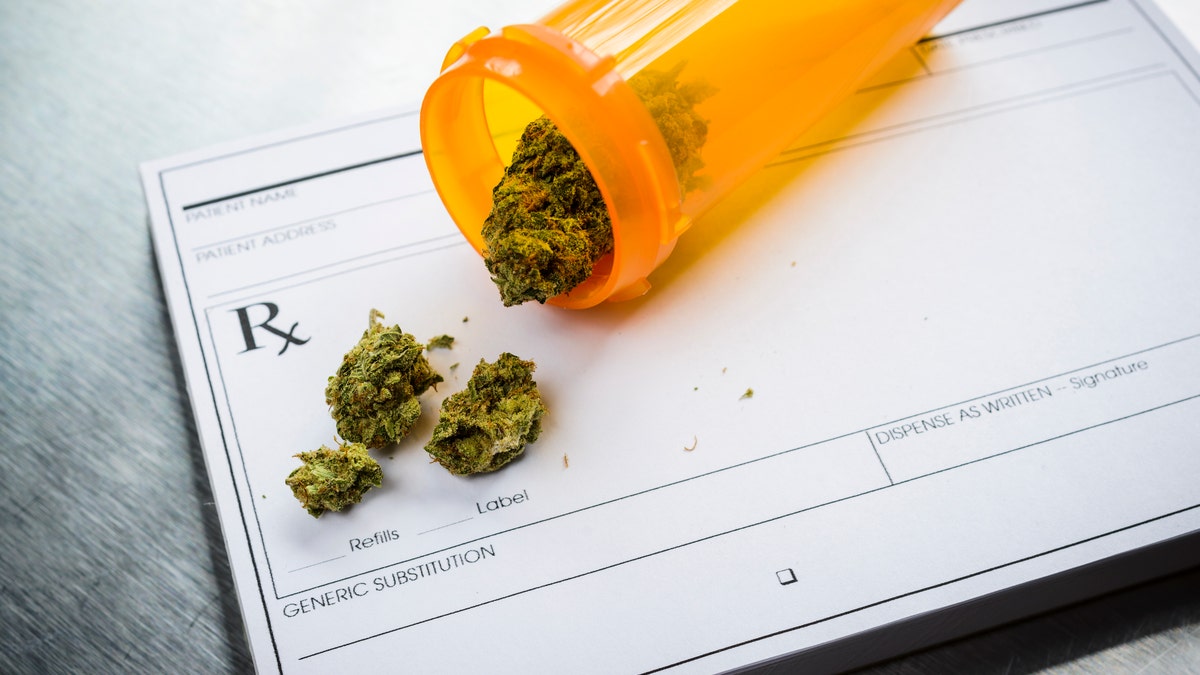
medical marijuana and a doctor's prescription (iStock)
As the smoke cleared after Election Day 2016, we found ourselves at the dawn of a new era for cannabis in the United States.
As early as this week in Massachusetts, and over the course of the next few weeks and months elsewhere, new marijuana laws will go into effect. On Election Day, four states, including California (the most populous state in the union), voted to legalize recreational marijuana, bringing the national total to eight states plus the District of Columbia. Four other states voted to allow the use of cannabis in a medical capacity, which means that medical marijuana is now legal in more than half of all states.
To put the election results into perspective, the percentage of Americans now living in an area where recreational marijuana is legal, or will soon be, rose from 5 percent to 20 percent.
Given the accelerated acceptance for the use of cannabis, it’s worth considering the consequences of these new laws. There has been plenty of hand-wringing about how these new laws might harm society, but I believe they have the potential to help in a range of societal issues.
More From Stat News
Prominent among them is the opioid crisis facing our nation. According to the Centers for Disease Control and Prevention, in 2012 health care providers wrote 259 million prescriptions for opioid pain medications. That’s enough for every adult in the United States to have his or her own bottle of pills.
That proliferation is taking a staggering toll. The CDC estimates that nearly half a million Americans are rushed to emergency departments for the misuse or abuse of these drugs each year. More than 33,000 Americans died in 2015 by an overdose of opioids in the form of prescription pain medicines or heroin.
But in states where medical marijuana has been legalized, the numbers are actually going down. In the years following implementation of marijuana laws, some states have seen a drop in opioid-related deaths by as much as 25 percent.
If the primary objective of opioids is pain control, nearly two decades of research have shown that these drugs don’t work that well when used chronically for non-cancer pain, offering relief for only about 30 percent of people. Marijuana can be an effective alternative or add-on, particularly for people with nerve pain of the kind that often accompanies diabetes or chemotherapy.
As a palliative care physician at the University of California, Los Angeles, I’ve seen patients who use marijuana to help control pain in conditions like cancer and multiple sclerosis. Many of them simply didn’t get adequate pain control from first- and second-line drugs or with interventional treatments like nerve blocks. For some, marijuana improved symptom control, often resulting in the need for less opioids or other prescription pain medications.
Beyond marijuana’s ability to relieve symptoms, there is also the potential for considerable cost savings with it. One recent study showed that when cannabis was a legally available alternative to traditional pain, sleep, and anti-anxiety medications, prescription drug costs among Medicare Part D recipients plunged significantly. In fact, prescribing marijuana instead of pharmaceutical medications saved an estimated $165.2 million in 2013 alone.
It seems possible, perhaps even likely, that broader national access to legalized marijuana will continue to drive down those costs even further. In addition to helping patients control pain, marijuana has also been reported to offer relief for other conditions, like spasticity in multiple sclerosis. Less well-supported by science are a host of other possible uses, including reducing seizures in certain kinds of epilepsy, easing the symptoms of lupus, and helping control inflammatory bowel disease. To date, there is a lack of scientific evidence supporting those other uses, but the potential cost savings for treating a wide range of conditions is compelling.
There are legitimate concerns, of course, that the more marijuana use becomes accepted among adults, the more likely it is to be misused by adults or to fall into the hands of minors.
The human brain is still developing well into the third decade of life. Heavy recreational use of marijuana can harm that development and alter certain brain functions. High doses of THC, one of the most widely studied molecules in marijuana, can hasten the onset of psychotic illnesses, cause low motivation and diminish activity, and eventually increases the risk of respiratory illnesses like bronchitis and periodontal diseases.
To be fair, however, marijuana does not appear to pose the same long-term medical risks associated with the use of tobacco, like an increased risk of cancer, obesity, stroke, or heart disease.
Just because marijuana may be more readily available doesn’t necessarily mean younger people are more likely to use it. The 2015 Healthy Kids Survey by the Colorado Department of Public Health and Environment showed that 4 out of 5 Colorado high school students abstained from using marijuana in the last year. And since the use of recreational marijuana was legalized there in 2009, overall use among high schoolers has actually dropped. Other national studies show a nationwide decline in rates of marijuana use or abuse among children and adolescents of almost 25 percent between 2002 and 2013.
With new marijuana use laws set to take effect across the country, we need to work diligently to make sure marijuana is used safely and kept out of the hands of children and teenagers. But as this historic shift in public opinion continues to unfold, we need to appreciate the circumstances before us and maximize the medical opportunities the use of cannabis may offer. This must, of course, include much more clinical and basic science and thoughtful, scientifically informed public policy.
Thomas Strouse, MD, is a palliative care physician and medical director of the Stewart and Lynda Resnick Neuropsychiatric Hospital at UCLA.
